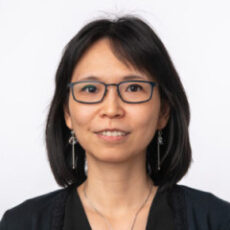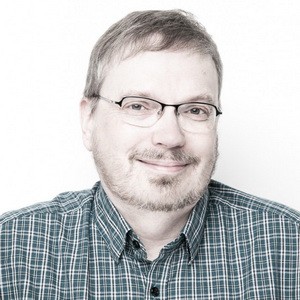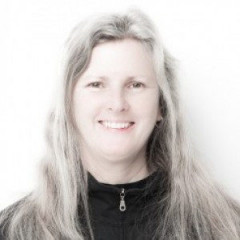Family: Bonds and Belonging (Grades 9-12)
Dr. Tzu-I ChungFormer Curator of History
Why did you want to become a historian?
History has always intrigued me – I’ve wondered how people lived and acted, how the past informs the present, what utensils people used and what clothes people wore (and how it felt to wear those clothes). I’ve been especially interested in what people in the past thought and assumed (what they unconsciously accepted as normal, like social class, gender roles and perceptions of nature) about their lives and times.
How did you become a curator?
During and after my doctoral studies, my years teaching in American universities strengthened my belief in the importance of diversity and historical education, and my commitment to public outreach. My position as a curator at the Royal BC Museum is a remarkable opportunity to work with scholars and professionals in public outreach, educational programming and exhibits.
What does a curator do?
To curate means to care for. My job involves caring for, developing, displaying, studying and sharing our museum’s history collections and our province’s history. My work can be divided into three major areas: research, collection development and interpretation, and outreach.
I conduct research on the artifacts in our history collections to find out the stories behind them, and how these stories connect to our provincial, national and global history. I also evaluate donations to the Royal BC Museum’s history collection and make short-term and long-term plans and arrangements to acquire new items. And, to provide content and context for major exhibits, I select artifacts and write their stories.
My outreach activities include writing articles, giving lectures and doing tours for various groups, in order to share information about BC’s history and cultural diversity, our collections and our exhibits. I also respond to inquiries from the public and participate in conferences and community and scholarly projects.
Dennis DuffyArchivist (Retired)
Why did you want to become an archivist?
I’ve always been interested in stories about BC’s pioneer days, ghost towns and so on. Like ghost towns, archival records are another kind of relic from the past and provide us with windows to look into that past. My work with archival films and sound recordings gives me a set of especially interesting windows to look through.
How did you become an archivist?
Through my background in audio-visual media. I was first hired in 1978 as a summer student, to copy sound recordings for preservation. I later worked as a contractor and my role gradually expanded; I was asked to research, write and edit books, to identify films made in British Columbia and eventually to help the BC Archives acquire and preserve historic films about BC. Finally, in 1998, I was given the opportunity to join the regular staff of the archives. (It only took me 20 years!)
What do you do as an archivist?
I still do some work with the sound and film collections. But I also help to deal with new acquisitions of archival records; with arranging and describing collections of records; with descriptive data and databases; and with many other projects. Recently, I edited a video production based on old films of soldiers in Victoria and Vancouver, training and preparing to leave BC to fight in the First World War. The video will be part of an exhibit commemorating the 100th anniversary of that war.
Stories by or about this person
This documentary film was created by the BC Forest Service to showcase Vancouver Island home industries. The film illustrates how the famous Cowichan sweaters are made by women on the Koksilah Reserve in Duncan, BC. Knitter Mary Ann Modeste is featured.
This film from 1945 was created by the BC Government Travel Bureau Photographic Branch and was used to attract employees and their families to the mining industry. The film emphasizes the comfort of miners and their families at mining camps.
This excerpt is of a film taken by Nurse Harriet Gerry, who worked for the federal Department of Indian and Northern Affairs. The amateur footage of First Nations communities includes scenes of children at play and a family arriving home with a new baby in around 1941.
This film has excerpts of scenes from around 1936-1940 at Fairbridge Farm School at Cowichan Station on Vancouver Island, BC. Many of the students were brought from England as orphans; others were voluntarily sent by their parents who believed they were sending them to a better life.
Delphine CastlesModern Human History Collections Manager (Retired)
Why did you want to become a collections manager?
Originally, my goal was a curator position but it was a collection management position that offered full-time employment at the notable Royal BC Museum that began my career.
How did you become a collections manager?
Primarily, hard work. Volunteering at the appropriate level of experience was very important. No matter how difficult, I persisted with my academics. When a collections manager of 30 years retired from the museum, I was the successful candidate for the position in the Human History department.
What does a collections manager do?
The following is from a partial listing of my job description:
-Enter, retrieve, compile and summarize data and information for acquisitions
-Assist in research and implement projects as guided by the curators, division head of collections or the exhibition manager
-Frequently required to train, direct and monitor the activities of co-op or internship students, contractors and volunteers.
-And so much more
What have you enjoyed most about working on the Family: Bonds and Belonging exhibit?
The hands-on aspect of developing an exhibition, delving into the collection storage areas, assisting in artifact selection, and accessing and providing artifact documentation and research information.




